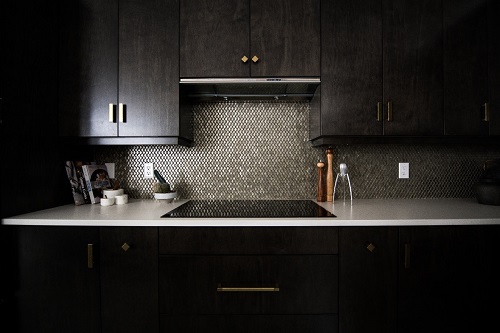General News
Reflections on new kitchen equipment by one with VI
Reflections on new kitchen equipment by one with VI
Daniel Williams, Founding Director of Visualise Training and Consultancy, looks at accessibility challenges posed by domestic appliances

As someone who is visually impaired, I pride myself on my independence and feel there is no need for me to ask for help with everyday tasks which I can easily complete myself. I take advantage of new and emerging technology to help me run a successful business and can now access things which only a few years ago would have been impossible.
However, cooking meals and other domestic tasks have become more of a challenge in recent years due to a lack of understanding by appliance manufacturers when it comes to accessibility for people living with sight loss.
I recently had a new kitchen installed. I am used to researching and looking around for items that will help make things easier for me and I began to look for an integrated hob. My old hob had suited me well; I simply turned a dial, and it heated up.
I want to be able to cook basic meals that are nutritious, but not too fancy. I just want to be able to cook enough to feed myself day-to-day.
Why should anyone with visual impairment feel that this is a task they must ask someone else to do for them when they are perfectly capable of coping alone? If you want to heat a simple pan of soup, cook vegetables or fry bacon and egg, these are not monumental tasks that require assistance.
Although I discovered there was very little, if anything, on the market for people with disabilities, I thought I had managed to order a suitable integrated induction hob with dials.
When the new kitchen was fitted and complete, it was only then I realised the hob I had purchased meant my independence had been taken away. Ease of functionality and accessibility for anyone with visual impairment had been completely overlooked by manufacturers in favour of sleek and streamlined design.
We live in the modern era of equality; people with sight loss have careers, get married, have long-term partners, start families and enter high-level sporting competitions. Moreover, they are independent, find different ways of doing things and can live alone…which means cooking their meals without assistance.
My new integrated cooker hob does not have white rings which stand out and inform me of the heated area. Instead, they are black to meet the same ‘look good’ requirements, without any thought for accessibility. A talking hob which is available is not integrated and I see no reason why I should not have a modern, attractive appliance.
I am not only frustrated; it leaves me in despair that my independence has been brushed aside without thought. It should be possible to manufacture an integrated hob with simple dials and easy access which makes a significant difference to someone with sight loss.
It is not just about hobs. Everything is becoming touchscreen, from cookers to TVs and washing machines. For blind people like me, this causes a huge problem as we rely on tactile input.
Accessibility to all domestic appliances needs improvement. Manufacturers need to start taking the disability market seriously and understand inclusivity. In addition, they need to test all their new products with the 2 million blind and partially sighted people and over 15 million disabled UK population in mind, otherwise, they are missing out on a huge cohort of customers and reducing people’s independence.
These tasks need to be carried out by visually impaired people, not by team members who have full sight without working knowledge and experience of living with accessibility challenges.
If invited to test your products, I’ll be happy to oblige and look forward to hearing from you!























